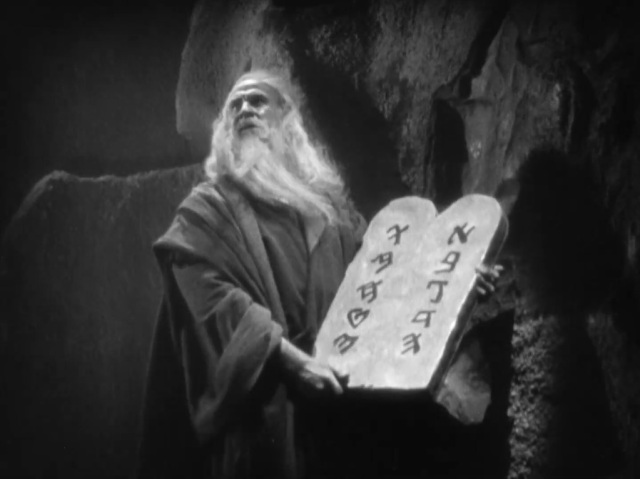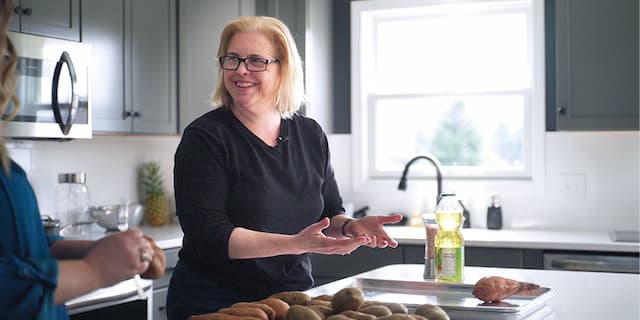The Tenth Commandment
In my study of the Deuteronomic concern for the status of women in Israelite society, I will discuss a few of the laws enacted in the book of Deuteronomy that seek to improve the legal rights of women in Israelite society in the seventh century BCE. Today I will continue my study with a review of the Tenth Commandment. When we study the Tenth Commandment as it appears in Exodus and in Deuteronomy, we can see an important change of attitude toward the status of women in Israelite society.
In the Tenth Commandment, as it appears in Exodus, it is clear that the woman is included in what belongs to a man, that it, she is considered part of his property:
You shall not covet your neighbor’s house; you shall not covet your neighbor’s wife, or male or female slave, or ox, or donkey, or anything that belongs to your neighbor (Exodus 20:17).
The “house” is not merely the dwelling of a man, but his entire household, as in Genesis15:2.In Exodus the idea of the “house” includes the wife, the male servants, the female servants, cattle, and whatever else a man may possess (“anything that belongs to your neighbor”).
Although the wife was part of a man’s house, the wife was not considered an absolute property of her husband, debased to the level of a slave as female servants were. The woman had rights as a wife and as a mother. In the home she probably supervised servants, educated children, and participated in the religious life of the family.
In Israel, most marriages were sealed with the gift of the mōhar. There is much question whether the mōhar, the bridal price which a man gave to the father of the bride, was actually a purchase by which a woman became the possession of her husband. Whether the mōhar was considered the price paid for the bride or a compensation that contributed to the union of two families, it is possible that in many situations, the mōhar was considered a purchase, which served to promote the idea that the woman was the husband’s property.
According to Exodus 21:7, a man could sell his daughter to a man, but in this case she became a concubine and not a slave. Rachel and Leah complained that their father Laban had sold them to Jacob. They said: “Does he not regard us as foreigners? Not only has he sold us, but he has used up what was paid for us.” However, if they were sold to Jacob, Laban’s action may not represent an Israelite practice but it may reflect a Mesopotamian marriage tradition (see Genesis 29:26).
The mōhar, the bridal price was paid by Shechem to marry Dinah, Jacob’s daughter. When Hamor and his son Shechem went to Jacob and his sons to ask permission for Shechem to marry Dinah, Shechem told Jacob: “Let me find favor in your eyes, and I will give you whatever you ask. Make the price for the bride and the gift I am to bring as great as you like, and I’ll pay whatever you ask me. Only give me the girl as my wife” (Genesis 34:11-12).
The versions differ in their translation of mōhar:
NRSV: “The marriage present.”
NIV: “The price for the bride.”
ESV: “The bride price.”
HCSB: “The compensation.”
ASV: The dowry.”
GWN: “The price paid for the bride.”
Since Shechem had to pay the mōhar and give a gift to the family, it is clear that the mōhar was the price he had to pay to obtain Dinah as his wife.
In the Covenant Code, the mōhar was also the price paid by the man who seduced a virgin. The man who violated the virgin must pay the “bride-price” (mōhar) and take the woman as his wife (Exodus 22:16-17).When David planned to marry Saul’s daughter, he was told that “the king wants no other price for the bride (mōhar) than a hundred Philistine foreskins.” Although the request was unusual, David had to pay what Saul requested as a mōhar before he could marry Michal. When Abraham sent his servant Eliezer to find a wife for Isaac, Eliezer gave Rebekah’s family expensive gifts (Genesis 24:53) probably as a mōhar, even though the word is not used in the text.
In the book of Deuteronomy, however, the attitude toward women changes. The book of Deuteronomy’s revision of the Tenth Commandment separates the woman from a man’s property in order to give proper attention to the rights of the woman:
Neither shall you covet your neighbor’s wife. Neither shall you desire your neighbor’s house, or field, or male or female slave, or ox, or donkey, or anything that belongs to your neighbor (Deuteronomy 5:21).
The Book of Deuteronomy demonstrates more respect for women in general for it emphasizes the rights of women as persons of worth, not as mere property of their fathers and husbands.
The fact that the writer of Deuteronomy placed the woman first reflects the desire to emphasize that the woman was not to be considered the property of her husband. In addition, while the book of Exodus uses the same Hebrew word חמד to describe coveting a man’s wife and his possessions, the book of Deuteronomy uses two different words for coveting: hāmad (חמד) is used to describe coveting the wife and ’āwāh (אוה)is used to describe coveting a person’s property, as if to emphasize that the two desires are completely different.
This concern for the dignity of Israelite women is characteristic of the book of Deuteronomy, and it is consistent with the author’s desire to actualize Mosaic laws in order to correct social problems prevalent in Israelite society in the late seventh century B.C.E.
Walter Kaiser, in his book Hard Sayings of the Bible (Downers Grove: InterVarsity Press, 1996) said that since the Ten Commandments were written “by the finger of God” on Mount Sinai (Deuteronomy 9:10), the Exodus version of the Decalogue was the original and that the wording of the commandment in Deuteronomy is a free restatement of the Exodus commandment (p. 173). Kaiser wrote:
This allowed Moses to present the commandment with some modifications and updating of the situation in light of their pending entrance into the land of Canaan, while still adhering closely to the original form.In fact, these differences are very slight and of very little consequence except as viewed against the challenges that present themselves in entering into the land.
I do not believe that “these differences are very slight and of very little consequence.” In his commentary on Deuteronomy 1-11 (Anchor Bible; New York: Doubleday, 1991), Moshe Weinfeld wrote:
The Deuteronomic version inverted the order of these two commandments. Unlike the Exodus version, which has “house” before “wife,” Deuteronomy puts first “wife” then “house” and devotes to the “wife” a separate command, which suits the general tendency of this book. Deuteronomy gives special attention to women’s rights, and therefore he gives preference to the wife and reserves for her a separate injunction. By the same token she does not join the slave, the animal, and so on, contrary to the arrangement in the Exodus version.
I believe that the Deuteronomic sequence of “wife” and “house” is a radical shift in the view of the status of women in Israelite society. The Deuteronomic change reflects the increased concern for the status of women in Israelite society in the seventh century BCE and the recognition that women had legal rights as members of the covenant community. In future posts, I will discuss some of these rights.
To be continued.
Studies on the Deuteronomic Concern for Women
The Status of Women in Israelite Society
The Deuteronomic Concern for Women
The Tenth Commandment (Deuteronomy 5:21)
Claude Mariottini
Emeritus Professor of Old Testament
Northern Baptist Seminary
NOTE: Did you like this post? Do you think other people would like to read this post? Be sure to share this post on Facebook and share a link on Twitter or Tumblr so that others may enjoy reading it too!
I would love to hear from you! Let me know what you thought of this post by leaving a comment below. Be sure to like my page on Facebook, follow me on Twitter, follow me on Tumblr, Facebook, and subscribe to my blog to receive each post by email.
If you are looking for other series of studies on the Old Testament, visit the Archive section and you will find many studies that deal with a variety of topics.





